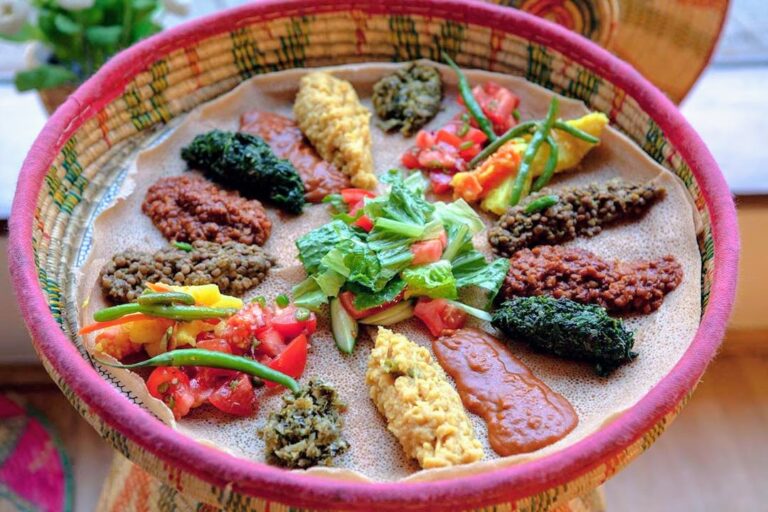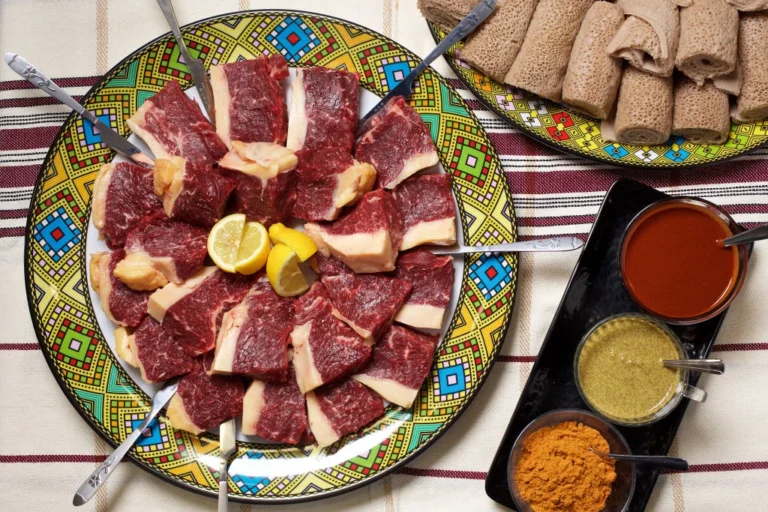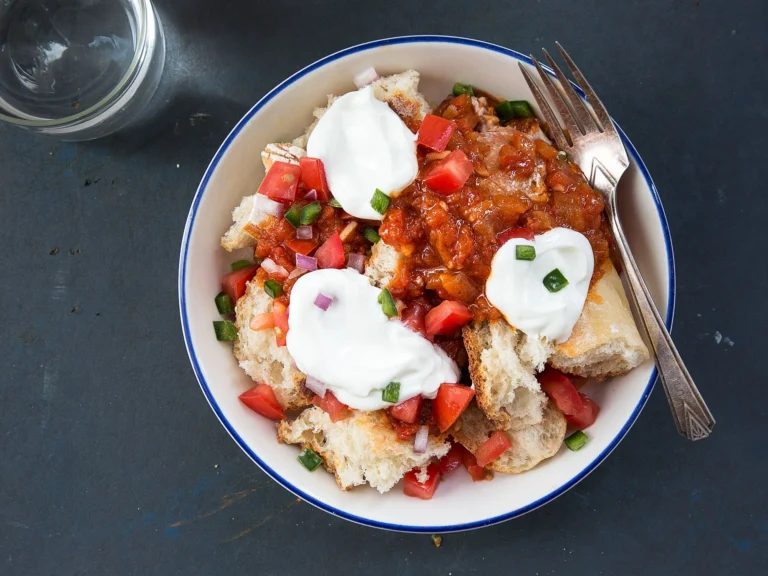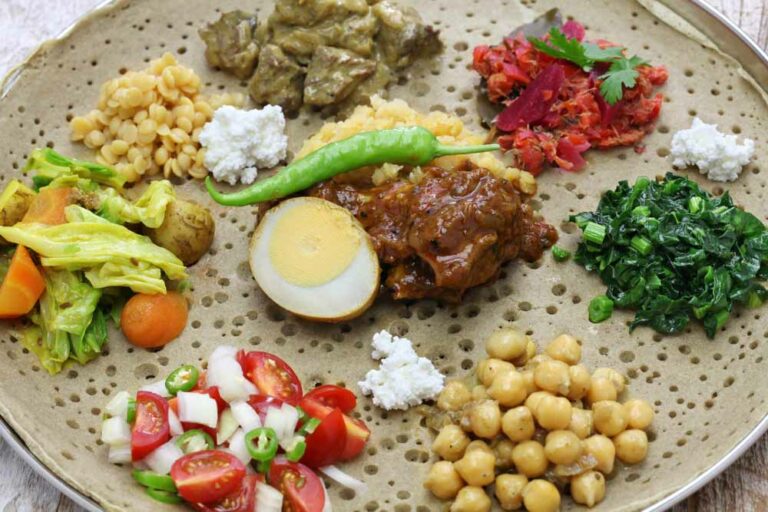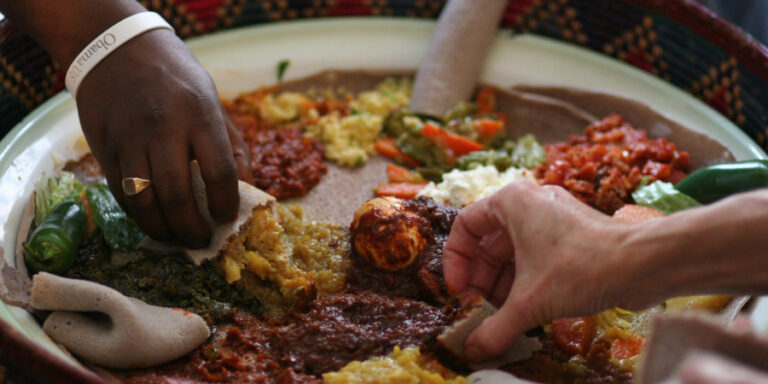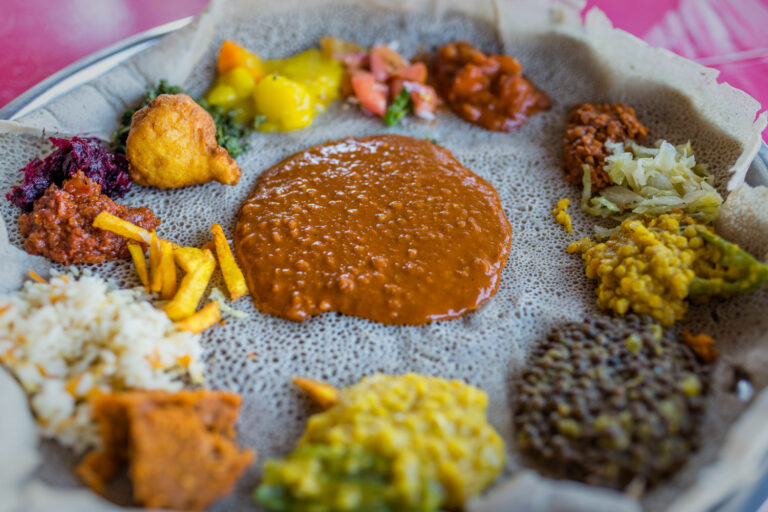Introduction: The Diverse Cuisine of Ethiopia
Ethiopia is a landlocked country located in the Horn of Africa. Its rich history and diverse landscapes have influenced its cuisine, which is known for its unique flavors and spices. Ethiopian cuisine is also characterized by its communal dining style, where food is served on a large platter and shared among the diners.
The Influence of Geography on Ethiopian Cuisine
Ethiopia’s varied geography, from highland plateaus to lowland deserts, has greatly influenced its cuisine. The country’s fertile highlands are known for their coffee, teff (a type of grain), and a variety of vegetables, while the lowlands are better suited for livestock farming. The coastal areas, on the other hand, have a seafood-based diet.
Ethiopian Cuisine in the Northern Highlands
The northern highlands of Ethiopia are known for their rich flavors and spices. Dishes in this region often feature berbere, a spice blend made from chili peppers, garlic, ginger, and other herbs. Popular dishes include tibs (grilled meat), injera (a sourdough bread), and doro wat (a spicy chicken stew).
Ethiopian Cuisine in the Southern Highlands
The southern highlands of Ethiopia are known for their use of spices and herbs. Dishes in this region often feature mitmita, a spicy chili powder made from bird’s eye chili, and koseret, an herb that adds a citrusy flavor to dishes. Popular dishes include kitfo (a raw beef dish), gomen kitfo (a dish made with collard greens), and injera.
Ethiopian Cuisine in the Central and Western Regions
The central and western regions of Ethiopia are known for their use of grains and legumes. Dishes in this region often feature lentils, chickpeas, and barley. Popular dishes include shiro (a stew made with ground chickpeas), yemiser wot (a spicy lentil stew), and injera.
Ethiopian Cuisine in the Lowlands and Coastal Areas
The lowlands and coastal areas of Ethiopia have a cuisine that is heavily influenced by seafood and spices. Dishes in this region often feature coconut milk, tamarind, and turmeric. Popular dishes include asa (grilled fish), dulet (a spicy sausage), and injera.
Regional Spices, Herbs, and Ingredients in Ethiopian Cuisine
Different regions of Ethiopia use different spices, herbs, and ingredients in their cuisine. For example, the northern highlands use berbere, while the southern highlands use mitmita. The central and western regions use grains and legumes, while the lowlands and coastal areas use seafood. These regional differences add to the diversity and richness of Ethiopian cuisine.
Conclusion: Ethiopian Cuisine is a Celebration of Diversity
Ethiopian cuisine is a celebration of the country’s diversity, both in its landscapes and its people. From the highlands to the lowlands, different regions of Ethiopia have developed their own unique flavors and spices. Whether you’re a fan of spicy stews, grilled meats, or vegetarian dishes, Ethiopian cuisine offers something for everyone.


